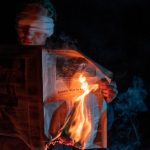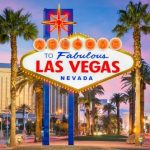 Music
Music  Music
Music  History
History 10 Less Than Jolly Events That Occurred on December 25
 Weird Stuff
Weird Stuff 10 Funny Ways That Researchers Overthink Christmas
 Politics
Politics 10 Political Scandals That Sent Crowds Into the Streets
 Weird Stuff
Weird Stuff Ten Bizarre Facts About The Doge Meme
 Our World
Our World 10 Ways Your Christmas Tree Is More Lit Than You Think
 Movies and TV
Movies and TV The 10 Coolest Stars to Set Sail on The Love Boat
 History
History 10 Things You Didn’t Know About the American National Anthem
 Technology
Technology Top 10 Everyday Tech Buzzwords That Hide a Darker Past
 Humans
Humans 10 Everyday Human Behaviors That Are Actually Survival Instincts
 Music
Music 10 Surprising Origin Stories of Your Favorite Holiday Songs
 History
History 10 Less Than Jolly Events That Occurred on December 25
 Weird Stuff
Weird Stuff 10 Funny Ways That Researchers Overthink Christmas
Who's Behind Listverse?

Jamie Frater
Head Editor
Jamie founded Listverse due to an insatiable desire to share fascinating, obscure, and bizarre facts. He has been a guest speaker on numerous national radio and television stations and is a five time published author.
More About Us Politics
Politics 10 Political Scandals That Sent Crowds Into the Streets
 Weird Stuff
Weird Stuff Ten Bizarre Facts About The Doge Meme
 Our World
Our World 10 Ways Your Christmas Tree Is More Lit Than You Think
 Movies and TV
Movies and TV The 10 Coolest Stars to Set Sail on The Love Boat
 History
History 10 Things You Didn’t Know About the American National Anthem
 Technology
Technology Top 10 Everyday Tech Buzzwords That Hide a Darker Past
 Humans
Humans 10 Everyday Human Behaviors That Are Actually Survival Instincts
10 Times Dictators Tried to Rewrite Their Own Childhoods
Dictators rarely leave their childhoods untouched. To strengthen their grip on power, many rewrote their early lives to appear humble, heroic, or even divine. These myths often portrayed them as poor shepherds, orphaned laborers, or gifted prodigies born to lead. In reality, their childhoods were frequently far more ordinary—or conveniently forgotten altogether.
These false origin stories weren’t just vanity projects; they were political tools used to legitimize control and manufacture loyalty. Here are 10 dictators who didn’t just rewrite their country’s history—they rewrote their own beginnings.
Related: Ten Tough & Terrible Queens Who Ruthlessly Ruled Their World
10 Saddam Hussein’s False Shepherd Origin
Throughout his rule, Saddam Hussein carefully constructed a mythologized version of his childhood that emphasized rural poverty and shepherding in the arid outskirts of Tikrit. Official biographies, school curricula, and Ba’athist propaganda portrayed him as a goat herder who grew up without shoes, wandering the desert in ragged clothing. The narrative painted him as a child of the soil, hardened by hardship and shaped by Iraq’s unforgiving landscape. His humble origins were repeated in state media and illustrated in murals and public monuments.
In reality, Saddam’s upbringing was more complex. He did spend time in Tikrit with his extended family. Still, historical accounts suggest his uncle Khairallah Tulfah—a devout nationalist and former army officer—played a significant role in shaping his political views. Saddam had access to education and was raised in a politically active household. His ties to the Sunni Arab elite and early entry into Baghdad’s political scene contradict the narrative of an isolated tribal herdsman.
The shepherd image was heavily promoted only after Saddam had secured power, as part of a broader effort to appear connected to Iraq’s rural population. This curated identity allowed him to present himself as the embodiment of Iraq’s resilience and working-class spirit. It distanced him from Western-educated technocrats and intellectuals, reinforcing his image as a self-made nationalist leader. After the fall of his regime, many Iraqis expressed surprise at how deeply the story had been woven into public life—from history textbooks to children’s songs.[1]
9 Stalin’s Rewritten Seminary Years
Joseph Stalin’s early life in the Georgian town of Gori was marked by poverty, abuse, and illness. As a teenager, he was accepted into the Tiflis Theological Seminary, one of the few paths for lower-class boys to receive an education. Soviet-era accounts portrayed his years at the seminary as a time of quiet study, spiritual reflection, and gradual disillusionment with religion. Official biographies painted Stalin as a brilliant student who rejected orthodoxy in favor of revolutionary ideology, often implying he left of his own volition to join the Marxist struggle.
Historical documents and personal testimonies paint a different picture. Stalin was a mediocre student who frequently clashed with his instructors. He was expelled not for political awakening but for repeated absences, insubordination, and failure to meet academic standards. School records show no early signs of ideological genius. His revolutionary activity at the time was minimal—limited to reading banned books and distributing leaflets.
The romanticized image of a seminarian-turned-martyr for the cause was a product of post-revolution propaganda. It erased his disciplinary problems and recast him as a spiritual thinker who voluntarily broke free from superstition to embrace dialectical materialism. This version aligned with Soviet classroom narratives and served to frame Stalin’s rise as the moral evolution of a boy who chose enlightenment over ignorance.[2]
8 Mao Zedong’s Idealized Revolutionary Childhood
Chinese Communist Party propaganda portrayed Mao Zedong as a born revolutionary, claiming he organized peasant children into reading groups and political discussions while still in elementary school. During the Cultural Revolution, textbooks and posters celebrated Mao as a precocious thinker who instinctively aligned with the working class. Some accounts even claimed he questioned Confucian authority by age eight and rallied classmates to resist tradition.
Independent biographies offer a more restrained account. Mao grew up in a relatively well-off farming family in Hunan province. He was literate and intellectually curious but often clashed with his strict Confucian father, which contributed to his skepticism toward traditional authority. He received a classical education before transitioning to modern schooling influenced by Western thought. His revolutionary views developed gradually after the fall of the Qing dynasty and were shaped by a wide range of philosophies—not just Marxist texts.
The myth of Mao as a boy-revolutionary was heavily promoted to encourage youth to emulate his supposed early defiance. Red Guards were taught that Mao had always been on the right side of history and that his leadership emerged naturally from childhood brilliance. This portrayal helped legitimize his dominance by implying it was not the result of power struggles or ideology alone, but the inevitable destiny of someone born to lead.[3]
7 Kim Il-sung and the Mount Paektu Myth
North Korean state history claims that Kim Il-sung was born in a secret guerrilla camp on Mount Paektu, a sacred site in Korean folklore, during the Japanese occupation in 1912. Official accounts describe his birth as accompanied by supernatural signs, including a bright star and an unseasonal double rainbow. According to textbooks and government media, he began leading resistance cells and confronting Japanese soldiers before the age of 14.
Outside North Korea, historians agree that Kim Il-sung was actually born in Mangyongdae, near Pyongyang—or possibly in Manchuria, where his family had fled. His father was a Protestant preacher and moderate nationalist, not a guerrilla leader. Kim did join anti-Japanese partisan groups later in his teens, but his early years were relatively unremarkable. Soviet archives indicate that he rose through Chinese and Soviet-aligned units during the 1930s and only adopted the Mount Paektu myth once in power.
The decision to link his origin to Mount Paektu served a symbolic purpose. The mountain is tied to Korea’s legendary origins, and associating the Kim dynasty with it elevated them beyond political leaders to near-divine status. The narrative blended nationalism, mysticism, and historical revisionism into a unifying myth taught from birth.[4]
6 Kim Jong Il’s Mystical Birth
North Korean state media claimed that Kim Jong Il was born in a log cabin on Mount Paektu under a double rainbow and a new star in the sky. His birth was said to trigger flowers blooming in winter and the appearance of a magical bird. This version became central to the state cult of personality. It was taught in schools, depicted in murals, and enshrined in museum exhibits.
In reality, Soviet records show that Kim Jong Il was born in 1941 in Vyatskoye, a village near Khabarovsk in the Soviet Union. His father, Kim Il-sung, was stationed there as part of a Soviet-backed Korean unit. The family remained in the USSR until the end of World War II. There were no mystical signs, and no log cabin on a sacred mountain.
The myth of his divine birth was crafted after Kim Jong Il was named successor. The supernatural imagery helped legitimize hereditary succession in a revolutionary state. By linking him to Mount Paektu and celestial signs, the regime asserted that his leadership was not only political but cosmically destined.[5]
5 Idi Amin’s War Hero Diary
Idi Amin often claimed he had served valiantly for the British in Burma during World War II, portraying himself as a decorated war hero. In interviews and speeches, he spoke of hand-to-hand combat, military strategy, and even friendships with British commanders. Ugandan state media echoed these stories, describing him as the regiment’s top marksman and a fearless leader who saved fellow troops.
British military archives tell a different story. Amin enlisted in the King’s African Rifles, a colonial regiment of the British Army, but served mostly as a cook and porter. There is no documented evidence that he saw combat in Burma or received commendations for bravery. In fact, former officers described him as erratic, undisciplined, and more feared for brutality toward civilians than valor in battle.
Despite this, the war hero myth became a pillar of his post-independence image. It allowed Amin to present himself as a nationalist warrior and defender of Uganda, deflecting attention from his increasingly erratic leadership and widespread human rights abuses. The fabricated military legend also helped build rapport with rural soldiers and citizens who admired toughness, even when built on fiction.[6]
4 Muammar Gaddafi’s Bedouin Shepherd Persona
After seizing power in 1969, Muammar Gaddafi cultivated the image of a poor Bedouin child born under a desert tent. Libyan state media emphasized that he grew up tending sheep, living without electricity or formal education. He was often filmed in traditional robes and famously pitched a tent in foreign capitals during diplomatic visits to reinforce his tribal, anti-colonial image. Textbooks portrayed him as a self-made revolutionary untouched by privilege.
While Gaddafi’s roots were rural, his family was not destitute. He received Islamic schooling and eventually attended Libya’s military academy, rising quickly through its ranks. He even received military training in the United Kingdom. His early influences were shaped more by Arab nationalism and exposure to Nasserism than by nomadic hardship.
The Bedouin persona allowed Gaddafi to frame his leadership as a return to cultural authenticity. By casting himself as a shepherd who rose without Western aid, he positioned himself in stark contrast to Libya’s royal and colonial past. The myth of the desert-born revolutionary became part of his ideological brand—even as his wealth and authoritarianism betrayed the simplicity he claimed to represent.[7]
3 Francisco Franco’s Student Prodigy Legacy
Spain’s fascist regime portrayed Francisco Franco as a brilliant and disciplined child with a deep sense of patriotic duty. Official biographies described him as a quiet student, fluent in several languages, and guided by conservative Catholic values from an early age. Franco was presented as a serious boy who preferred reflection over games—a born leader molded by virtue and intellect.
In reality, Franco’s academic performance was average. While he was indeed disciplined and reserved, contemporaries described him as withdrawn and self-righteous rather than intellectually gifted. His entrance into military school had more to do with family connections than exceptional merit. His early career success came from loyalty, cautious politics, and timing rather than tactical brilliance.
This myth of a gifted youth was central to the regime’s conservative message. It provided a moral narrative to justify Franco’s rise. It reinforced the idea that strong leadership should stem from tradition, not political change. The carefully curated image also diverted attention from the opportunism and favoritism that helped him secure power.[8]
2 Nicolae Ceaușescu’s Peasant Orphan Myth
Nicolae Ceaușescu presented himself as a peasant orphan who rose through hardship and ideological purity. Romanian propaganda described him as a boy who lost his parents young and labored in the fields to survive. His story became a staple of state textbooks and newsreels, promoting him as the ideal communist citizen: loyal, self-made, and rooted in rural poverty.
Ceaușescu was indeed born in the village of Scornicești, but he was not an orphan. His father, while landless, had political ties and held a minor role in local governance. At 11, Nicolae moved to Bucharest and became a shoemaker’s apprentice, eventually joining communist circles. While his early life was hard, the orphan story was an invention meant to sever him from family influence and highlight ideological self-reliance.
As Ceaușescu’s rule became more autocratic, the myth helped solidify his cult of personality. By portraying himself as inseparable from the Romanian working class, he fostered an image of unity and loyalty that suppressed dissent. The legend of the orphan-turned-leader blurred the line between political control and personal identity.[9]
1 Francisco Macías Nguema’s Peasant-Outlaw Image
Francisco Macías Nguema, Equatorial Guinea’s first post-independence president, claimed he was a rebellious youth who resisted Spanish colonial oppression. His official biography depicted him as a tribal warrior, survivor of multiple assassination attempts, and recipient of mystical visions from ancestral spirits. State propaganda painted him as a spiritual leader shaped by hardship and cosmic destiny.
In truth, Macías served as a low-level colonial clerk and translator. He was educated, politically shrewd, and worked within the Spanish system rather than against it. After independence, he consolidated power by eliminating rivals and creating a brutal dictatorship marked by forced labor, famine, and mass executions.
His mythical childhood was retrofitted to elevate him above both colonial collaborators and post-independence technocrats. By blending mysticism with anti-colonial rhetoric, Macías positioned himself as the only legitimate ruler for a liberated Africa. The myth justified his paranoia, violence, and rejection of foreign advisors, and helped turn Equatorial Guinea into one of the most repressive regimes in modern African history.[10]








